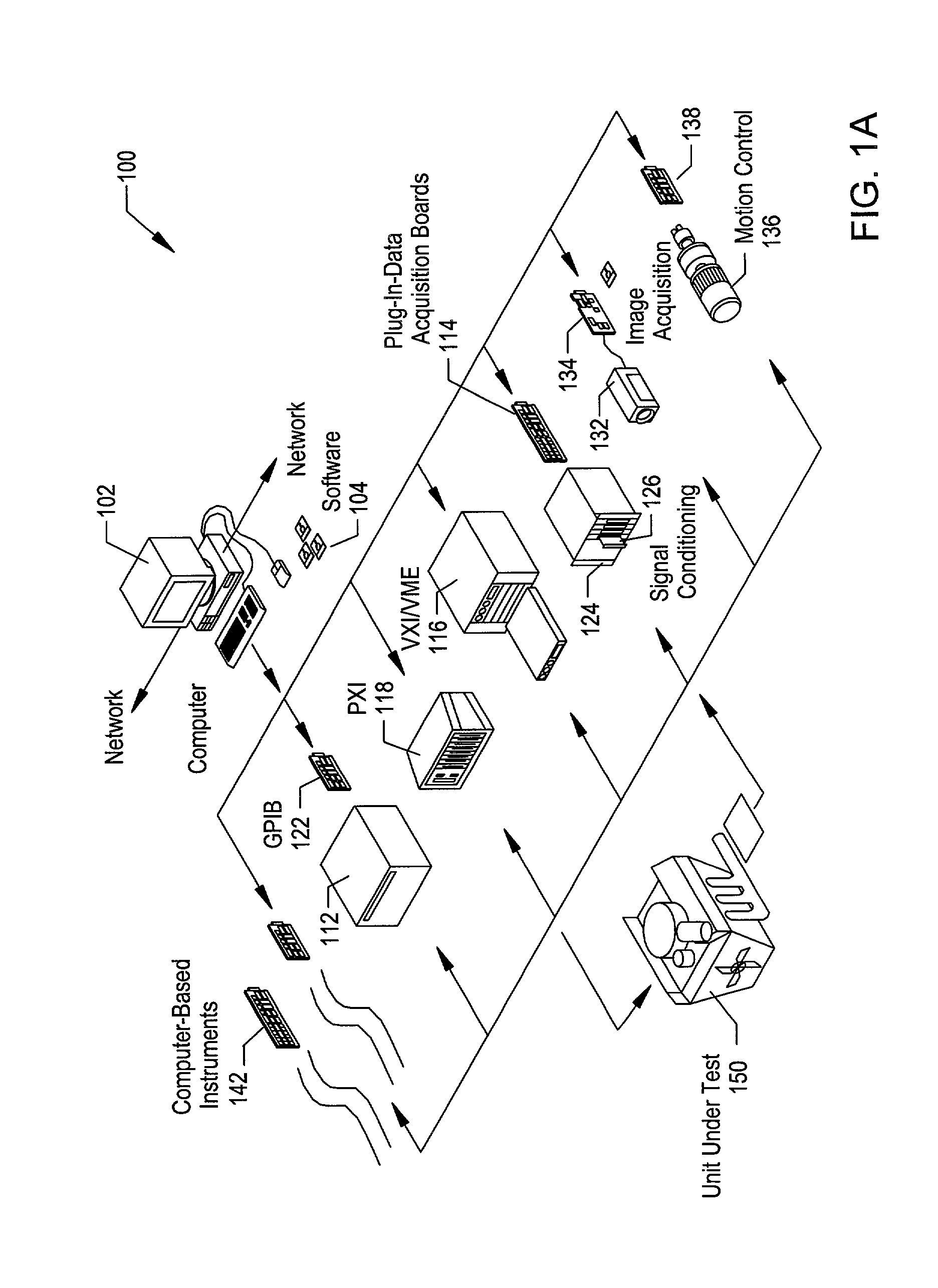System and method for performing type checking for hardware device nodes in a graphical program
a hardware device and type checking technology, applied in the field of graphical programming, can solve the problems of user programming skills and ability to interact with the computer system often becoming a limiting factor in the achievement of optimal utilization of the computer system, complex task of programming a computer system to model or implement a process often being further complicated, etc., to avoid runtime errors and execute the graphical program
- Summary
- Abstract
- Description
- Claims
- Application Information
AI Technical Summary
Benefits of technology
Problems solved by technology
Method used
Image
Examples
Embodiment Construction
Incorporation by Reference
[0048]U.S. Pat. No. 5,847,953 titled “System and Method for Performing Class Checking of Objects in a Graphical Data Flow Program,” issued Dec. 8, 1998, whose inventors were Omid Sojoodi and Steven W. Rogers, and which is assigned to National Instruments Corporation, is hereby incorporated by reference in its entirety as though fully and completely set forth herein.
[0049]U.S. Pat. No. 5,905,649 titled “System and Method for Performing Instrumentation Independent Virtual Instrumentation Functions Using Attribute Nodes in a Graphical Data Flow Program,” issued May 18, 1999, whose inventors were Omid Sojoodi and Steven W. Rogers, and which is assigned to National Instruments Corporation, is hereby incorporated by reference in its entirety as though fully and completely set forth herein.
FIGS. 1A and 1B—Instrumentation and Industrial Automation Systems
[0050]FIGS. 1A and 1B illustrate exemplary systems which may store or execute a graphical program which accesses...
PUM
 Login to View More
Login to View More Abstract
Description
Claims
Application Information
 Login to View More
Login to View More - R&D
- Intellectual Property
- Life Sciences
- Materials
- Tech Scout
- Unparalleled Data Quality
- Higher Quality Content
- 60% Fewer Hallucinations
Browse by: Latest US Patents, China's latest patents, Technical Efficacy Thesaurus, Application Domain, Technology Topic, Popular Technical Reports.
© 2025 PatSnap. All rights reserved.Legal|Privacy policy|Modern Slavery Act Transparency Statement|Sitemap|About US| Contact US: help@patsnap.com



